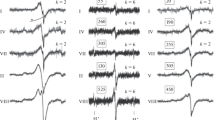Abstract
The UV photolysis of 8-bromo-2′-deoxyadenosine has been investigated in different solvents and in the presence of additives like halide anions. Photolytic cleavage of the C-Br bond leads to formation of the C8 radical. In methanol, subsequent hydrogen abstraction from the solvent is the main radical reaction; however, in water or acetonitrile intramolecular hydrogen abstraction from the sugar moiety, to give the C5′ radical, is the major path. This C5′ radical undergoes a cyclization reaction on the adenine and gives the aminyl radical. A rate constant of 1.8 × 105 s−1 has been measured by laser flash photolysis in CH3CN for this unimolecular process. Product studies from steady-state photolysis in acetonitrile have shown the conversion of 8-bromo-2′-deoxyadenosine to 5′,8-cyclo-2′-deoxyadenosine in 65% yield and in a diastereoisomeric ratio (5′R): (5′S) = 1.7. Evidence supporting that the equilibrium Br• + Br− ⇌ Br2•− plays an important role in this synthetically useful radical cascade is obtained by regulating the relative concentrations of the two reactive oxidizing species.
Similar content being viewed by others

References
For example, see: M.-L. Dirksen, W. F. Brakely, E. Holwitt and M. Dizdaroglu, Effect of DNA conformation on the hydroxyl radical-induced formation of 5′,8-cyclopurine-2′-deoxyribonucleoside residues in DNA Int. J. Radiat. Biol. 1988 54 195–204.
M. Dizdaroglu, P. Jaruga and H. Rodriguez, Identification and quantification of 5′,8-cyclo-2′-deoxyadenosine in DNA by liquid chromatography/mass spectrometry Free Radical Biol. Med. 2001 30 774–784.
P. Jaruga, M. Birincioglu, H. Rodriguez and M. Dizdaroglu, Mass spectrometric assays for the tandem lesion 5′,8-cyclo-2′-deoxyguanosine in mammalian DNA Biochemistry 2002 41 3703–3711.
M. Birincioglu, P. Jaruga, G. Chowdhury, H. Rodriguez, M. Dizdaroglu and K. S. Gates, DNA base damage by the antitumor agent 3-amino-1,2,4-benzotriazine 1,4-dioxide (tirapazamine) J. Am. Chem. Soc. 2003 125 11607–11615.
C. Chatgilialoglu, M. Guerra and Q. C. Mulazzani, Model studies of DNA C5′ radicals. Selective generation and reactivity of 2′-deoxyadenosin-5′-yl radical J. Am. Chem. Soc. 2003 125 3839–3848.
R. Flyunt, R. Bazzanini, C. Chatgilialoglu and Q. G. Mulazzani, Fate of the 2′-deoxyadenosin-5′-yl radical under anaerobic conditions J. Am. Chem. Soc. 2000 122 4225–4226.
A. Romieu, D. Gasparutto, D. Molko and J. Cadet, Site-specific introduction of (5′S)-5′,8-cyclo-2′-deoxyadenosine into oligodeoxyribonucleotides J. Org. Chem. 1998 63 5245–5249.
A. Romieu, D. Gasparutto and J. Cadet, Synthesis and characterization of oligonucleotides containing 5′,8-cyclopurine 2′-deoxyribonucleosides: (5′R)-5′,8-cyclo-2′-deoxyadenosine, (5′S)-5′,8-cyclo-2′-deoxyguanosine, and (5′R)-5′,8-cyclo-2′-deoxyguanosine Chem. Res. Toxicol. 1999 12 412–421.
I. Kuraoka, C. Bender, A. Romieu, J. Cadet, R. D. Wood and T. Lindahl, Removal of oxygen free-radical-induced 5′,8-purine cyclodeoxynucleosides from DNA by the nucleotide excision-repair pathway in human cells Proc. Natl. Acad. Sci. USA 2000 97 3832–3837.
I. Kuraoka, P. Robins, C. Masutani, F. Hanaoka, D. Gasparutto, J. Cadet, R. D. Wood and T. Lindahl, Oxygen free radical damage to DNA: translesion synthesis by human DNA polymerase η and resistance to exonuclease action at cyclopurine deoxynucleoside residues J. Biol. Chem. 2001 276 49283–49288.
P. J. Brooks, D. S. Wise, D. A. Berry, J. V. Kosmoski, M. J. Smerdon, R. L. Somers, H. Mackie, A. Y. Spoonde, E. J. Ackerman, K. Coleman, R. E. Tarone and J. H. Robbins, The oxidative DNA lesion 5′,8-(S)-cyclo-2′-deoxyadenosine is repaired by the nucleotide excision repair pathway and blocks gene expression in mammalian cells J. Biol. Chem. 2000 275 22355–22362.
K. Randerath, G. D. Zhou, R. L. Somers, J. H. Robbins and P. J. Brooks, A 32P-postlabeling assay for the oxidative DNA lesion 5′,8-cyclo-2′-deoxyadenosine in mammalian tissues. Evidence that four type II I-compounds are dinucleotides containing the lesion in the 3′ nucleotide J. Biol. Chem. 2001 276 36051–36057.
It was reported in a note as unpublished results that photolysis at 254 nm of a de-aerated aqueous solution of 2 afforded (5′S)- and (5′R)-isomers of 1 in 2 and 12% yields, respectively (ref. 3).
For the ribo analogues, see: C. Chatgilialoglu, M. Duca, C. Ferreri, M. Guerra, M. Ioele, Q. G. Mulazzani, H. Strittmatter and B. Giese, Selective generation and reactivity of 5′-adenosinyl and 2′-adenosinyl radicals Chem. Eur. J. 2004 10 1249–1255.
J. Berkowitz, G. B. Ellison and D. Gutman, Three methods to measure RH bond energies J. Phys. Chem. 1994 98 2744–2765.
X. Fang, R. Mertens, C. von Sonntag, Pulse radiolysis of aryl bromides in aqueous solutions: Some properties of aryl and arylperoxyl radicals J. Chem. Soc., Perkin Trans. 2 1995 1033–1036.
P. Wardman, Reduction potentials of one-electron couples involving free radicals in aqueous solution J. Phys. Chem. Ref. Data 1989 18 1637–1755.
Y. Liu, A. S. Pimentel, Y. Antoku, B. J. Giles and J. R. Barker, Temperature-dependent rate and equilibrium constants for Br.bul.(aq) + Br+(aq).dblarw. Br2-.bul.(aq), J. Phys. Chem. A 2002 106 11075–11082.
Y. Liu, R. L. Sheaffer and J. R. Barker, Effects of temperature and ionic strength on the rate and equilibrium constants for the reaction I.bul.aq + I-aq.tautm. I2.bul.-2aq J. Phys. Chem. A 2003 107 10296–10302.
Author information
Authors and Affiliations
Corresponding author
Rights and permissions
About this article
Cite this article
Jimenez, L.B., Encinas, S., Miranda, M.A. et al. The photochemistry of 8-bromo-2′-deoxyadenosine. A direct entry to cyclopurine lesions. Photochem Photobiol Sci 3, 1042–1046 (2004). https://doi.org/10.1039/b410939b
Received:
Accepted:
Published:
Issue Date:
DOI: https://doi.org/10.1039/b410939b



